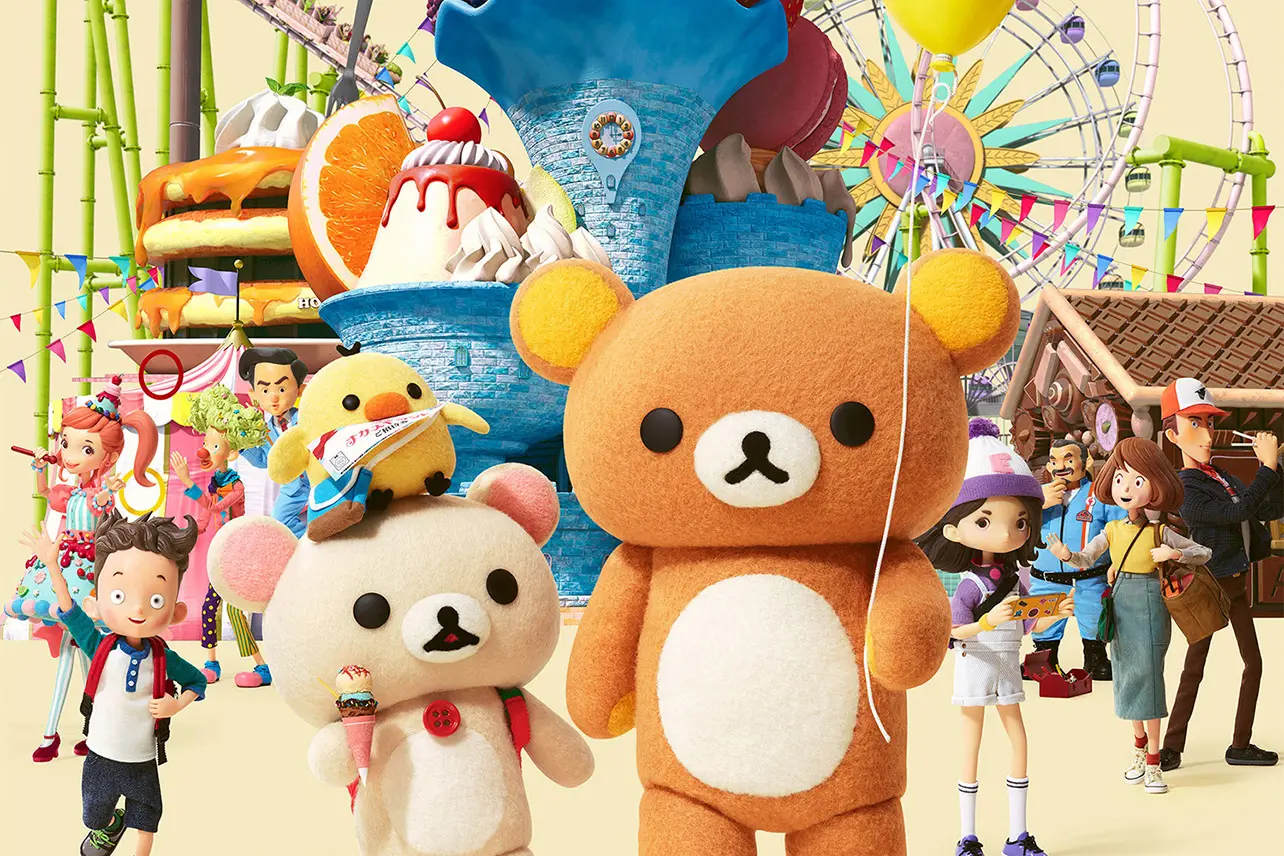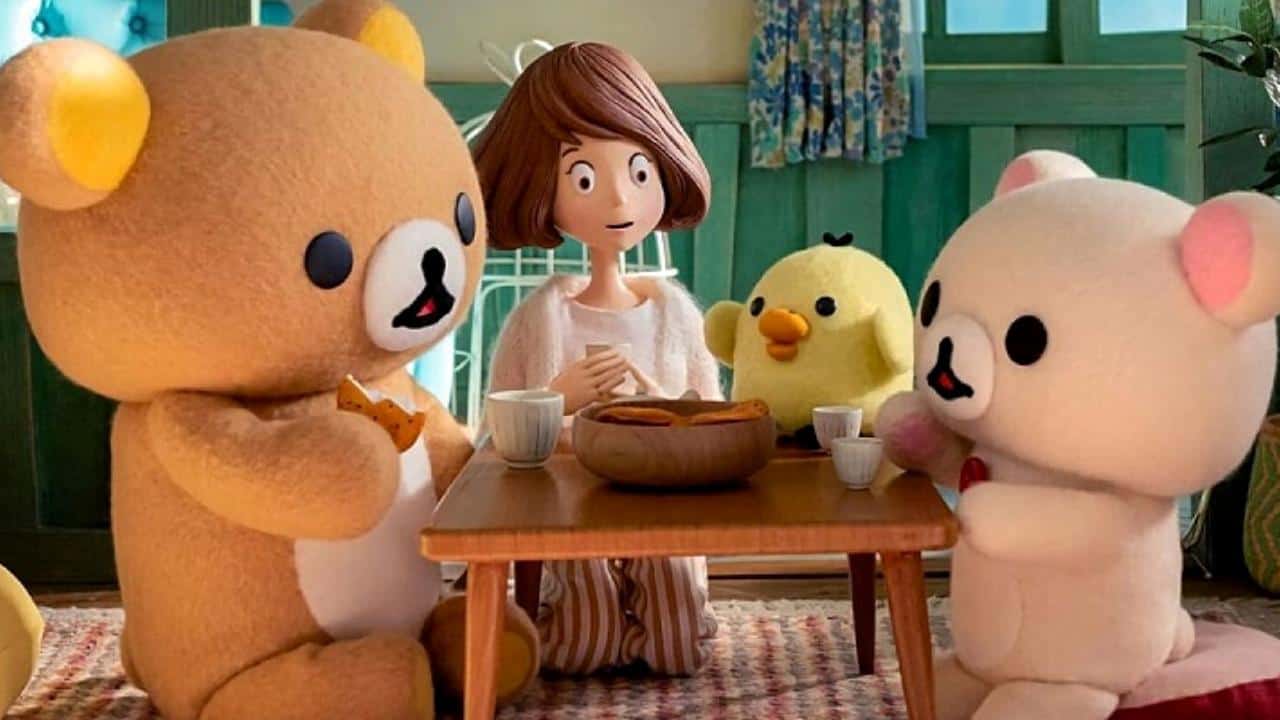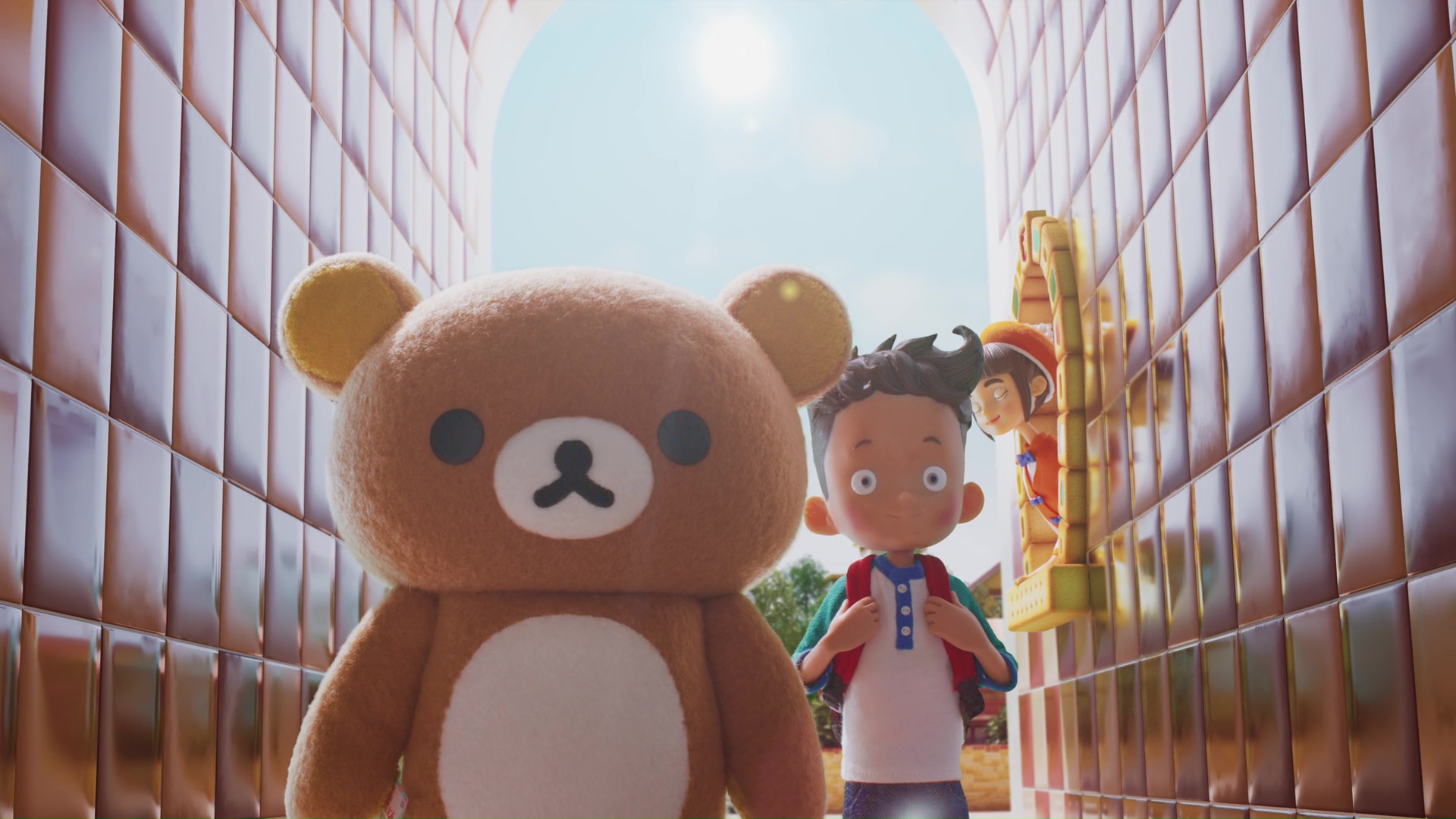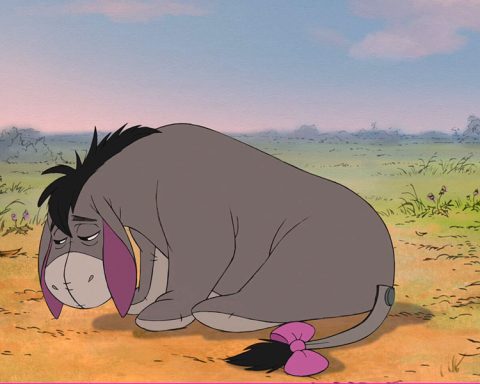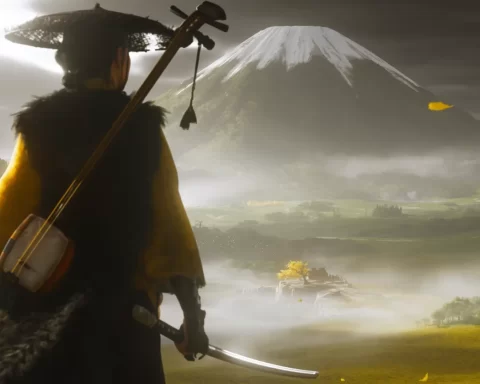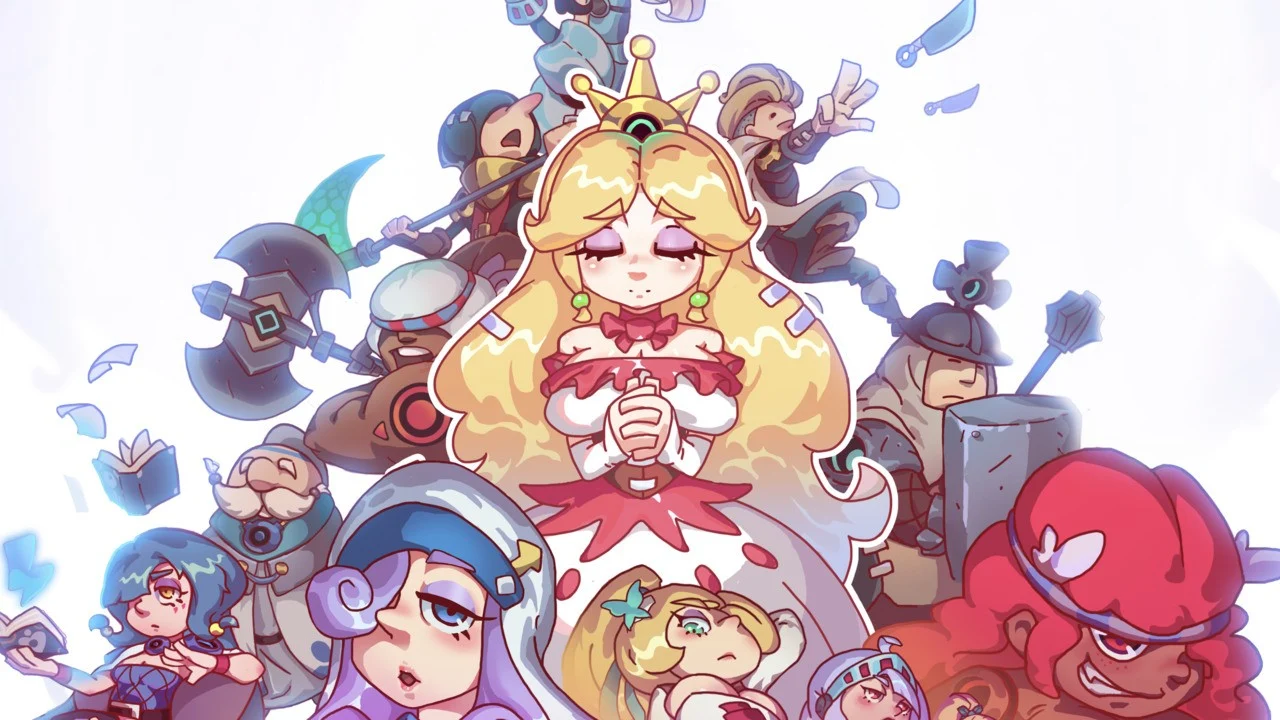If you’ve got access to Netflix, then you’ve probably seen the Rilakkuma animated series. Rilakkuma and Kaoru launched back in 2019, and a second season: Rilakkuma’s Theme Park Adventure, finally landed, after some delays, in late 2022.
As stop-motion animations, each of the short, generally sweet episodes across both seasons looks happy and charming. The characters are innocent, the theme music charming, and it’s assuredly a series that aims to be for all ages.
Yet there’s a lot that we can learn from Rilakkuma about the Japanese and their entertainment culture. Rilakkuma is a fascinating creation and character, and it is one of the better examples of the mascot character to come from Japan – a subject that continues to befuddle, bemuse, and amuse people that live outside of the country.
In short: Rilakkuma is a manifestation of Shinto philosophy, and that’s a big part of what makes him so interesting.
Shinto, Animism, and Consumerism – An eclectic mix
Around about four in five Japanese people participate in Shinto practices in some form. Only around three per cent of the population actively identify as Shinto, but that’s largely because Shinto isn’t like Christianity or Buddhism, where you would actively join the faith and participate in ceremonies. If you drop into a shrine while on a trip and say a quick prayer, or join in with one of the many Shinto-organised festivals that feature on the calendars for every town and city across the country, then you’ve really done all that Shinto asks of you.
More to the point, it’s such a pervasive faith, and so closely intertwined with the dominant active faith in Japan – Buddhism – that most Japanese have some measure of respect for the core philosophical thought of the faith. It has become cultural, in other words.
Shinto is an animist faith. What that effectively means is that it believes that everything in existence – living and unliving – has a spirit or soul. To the Japanese these spirits are a kind of deity, are called “kami”, and exist in people, animals, mountains, rivers, and man-made objects. This is why you’ll find little shrines deep within caves, on fishing vessels nestled under the shady trees in forests, occupying little alleyways in cities, and some kind of display in many homes. They’re simply an acknowledgement of and respect for the kami of the area.
Now, do the Japanese continue to believe the sentient souls watch humanity from within the rocks, rivers, bears and oceans, and will rise to punish those that displease them? To generalise here, no. But what this ancient belief has done has conditioned the Japanese to see things beyond their utility, and to truly respect the “spirit” that resides within them.
For a simple example of this in action: the Japanese have turned the act of fixing a broken pot into an art form. Kintsugi is the act of “gluing” together pottery broken beyond practical use by using a combination of gold, silver or platinum to stick the cracks together and then lacquer to make the results as robust as before they broke. These days kintsugi is respected as a beautiful art form in its own right. It comes from a place where the respect for the spirit of the object asked the Japanese to do everything to repair it, rather than toss it out.
Spend enough time immersed in Japanese culture, and this respect for the spirit of things becomes a very clear difference between them and our more utilitarian culture in the West. We use things until they’re no longer useful to us, and then we discard them. The Japanese would prefer to think about it as working with the thing and giving it the respect it’s due for its service. Again, these are broad-brush generalisations, but the Japanese culture has always had Shinto there with this fundamental animist philosophy behind it, and it’s a perspective that has become ingrained within the broad culture.
It also leads the Japanese to “see” a relatable spirit in an idea, and this is where mascot culture comes from. Mascots – which to us in the West often seem excessive when a simple logo would suffice – represent everything in the country, from government departments (one of the first things you’ll see when you arrive at a Japanese airport is mascots representing both customs and quarantine), to landmarks, towns and cities.
Japanese culture is also very consumerist. They love their products and identify with their possessions. This is where the idea of mascot characters, created purely as a commercial venture, comes in. Hello Kitty is the most famous of these. Kitty was a character created exclusively to use as a merchandising venture and has subsequently become one of the most potent media properties worldwide. Unlike Mickey Mouse or Peter Rabbit, Kitty wasn’t a cartoon or literary character at first. Unlike Mario, Sonic, or Pikachu her popularity doesn’t stem from being in popular video games. Kitty is successful because a designer at Sanrio successfully created something that people wanted to buy on notebooks, charms, and on clothing.
Rilakkuma comes from Sanrio’s rival mascot factory, San-X, and was popular in much the same way. He came later than Hello Kitty (launched in 2003), but quickly became a popular choice on stationery and as stuffed toys. There was something highly endearing about the blank, bear-like face and lazy demeanour.
The popularity of this character continued to grow, and soon one character became a stable of them. Korilakkuma (a white, smaller, and female version of Rilakkuma), Kiiroitori (a yellow bird chick), and Chairoikoguma (an actual bear cub, rather than just a character dressed as a bear), all become popular in their own right.
Soon, San-X had expanded the characters to a big enough merchandise line that there were dedicated retail outlets (we all know about the Pokémon-theme Pokécentres, but there are Rilakkuma stores, too). There are also café/restaurants that are themed after the characters. Convenience stores regularly run special promotions for limited-edition goods. And then came the stop-motion Netflix cartoon.
Rilakkuma has become a major Japanese export to the globe. Go into the heart of virtually any city with a Chinatown, and you’re going to see Rilakkuma goods (whether official or not is often a dubious question, but it’s identifiably the character). Backpacks at anime and gaming conventions will have Rilakkuma badges pinned all over them. I’ve even seen the occasional Rilakkuma cosplay at events.
As with Hello Kitty, and even the likes of Hatsune Miku, all of this was able to happen because, firstly, the animism of Japanese Shinto primed the culture to see souls in concepts, and see value in simply giving those souls form without having some other creative imperative to do so. Secondly, the consumerism of the country allowed them to capitalise on those subsequent character inventions. It’s truly difficult to imagine that Rilakkuma could have been created by any other culture.
A learning experience
While the two seasons of the Rilakkuma series are consistently sweet and charming, often very funny, there’s a melancholic edge to both that’s difficult to shake, too. In the first season, the mascots and their human “owner”, Kaoru, have the looming spectre hanging over their heads that they’ll be moving out of their home soon, as the owner of the apartment block has sold up and it will be pulled down.
That home, aged and run-down, is nonetheless full of warm memories, and becomes a source of nostalgia even as the “family” is living within it. There is a sense of innocence lost about the “bears” needing to make hard decisions about what possessions they can bring with them on the move. Further driving home that sense of innocence lost is one particularly poignant episode when, during winter, Rilakkuma & co. build a family of snowmen that subsequently animate. Rilakkuma dances with them, only to find the next morning the snow has melted and the snowmen have returned the carrot nose and scarves that they were given to the apartment’s doorstep. The melted snowman is one of the most common early metaphors children are given to conceptualising death, and it has the same impact in the cartoon.
The second season, meanwhile, is set entirely within an amusement park as the gang spends one last, glorious day there before it shuts down for good. Here too we see nostalgia and bittersweetness, as the group runs into the various people employees for whom the amusement park has meant so much and hears their stories. There’s one particular scene where one of the fairground’s mechanics has built a massive rubber duck robot for the daily parade but never had the chance to use it. It was his way of connecting to his long- gone master and teacher. That he gets to finally let it out in all its glory right at the end is a truly impactful, emotional, joyous and sad plot moment.
The inevitable end of these things is never something that the characters try and push back against. There’s no effort to try and work out a way to keep the amusement park open, or those snowmen “alive.” The apartment is doomed to be torn down, and that’s all there is to it. The Japanese have a long history of this stoic attitude towards the end of things. One of the reasons that the Sakura blossom means so much to them is because it’s a bloom that only lasts a couple of days and reminds them of the need to enjoy what time they have. After all, it does all come to an end. Nonetheless, I would imagine that Rilakkuma would come across as tonally uncomfortable to some in the West, given that our cartoons are much more focused on uplifting messages of empowerment.
But this is also why I love Rilakkuma so much, and believe that, unlike many children’s shows here in the West, that it has universal value to us all. We live in a complex, fast-paced, and increasingly dehumanised world. We’re asked to work harder, longer, and for less in return. We’re constantly barraged with rhetoric around success being the only standard for life – that we need to create something that will outlive us into perpetuity, and anything less than that is us wasting our lives and energies.
Rilakkuma, this creation that came from a place of respect for the soul that resides in everything, exists to remind us that whatever we build, and whatever we work for, is finite. It ends. If not during our lives, then at some point later. The idea of a legacy is a myth. This isn’t a lesson that comes from a miserable, negative nihilism, however. Quite the opposite. It’s a reminder to enjoy what we have, when we have it and sometimes, just as with Rilakkuma, “enjoying it” need not mean having a goal beyond enjoying some pancakes or dango at an amusement park.
If you haven’t watched Rilakkuma yet, then check out both seasons. Episodes are only around 10 minutes long, and seasons are a dozen or so episodes each. This show is well worth subscribing to Netflix for a month for, as well, if you’re not currently a subscriber.
Sadly, though there should be another way to watch such excellent, meaningful, and culturally relevant TV, Netflix does pay for the production of this show, so it is exclusive to the platform.
Note: This article originally appeared in the September 2022 edition of the Dee Dee Zine. As we are no longer publishing that magazine, we have re-printed the feature here in full so all can read it.
